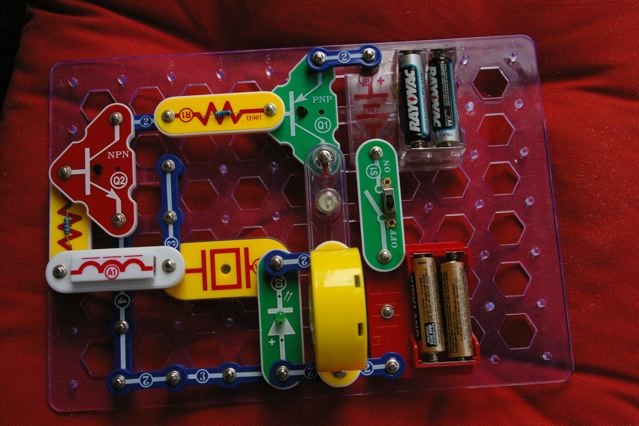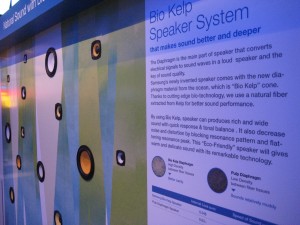I decided I need to learn some basics of electronic circuitry, a subject on which I was pretty ignorant. My path gave me some useful insights into how educators do, or do not, make learning interesting and successful.

Initially, my curiosity was piqued by Elenco’s Snap Circuits Junior, a kit that allows kids to build simple projects by snapping together components onto a plastic board. It’s fun and my kids and I were successful in such achievements as a prototype lie detector. If your hands are clammy and you touch the connectors, it makes a loud noise and lights go off—fun! But we had no idea how it actually worked. We were connecting a series of black boxes to make a new black box.
Next stop was amazon.com, where reviewers heartily recommended Getting Started in Electronics by Forrest E. Mims III. It’s worth getting just to see the production value—every page is painstakingly hand-lettered (which makes for some interesting results when you tell Amazon to “search inside this book”) instead of typeset. But whereas the Snap Circuits have you doing projects without explanation, this book is much more telling than showing.
I put the Mims book aside when I moved on to “300 in 1 Electronics Lab”, also by Elenco, which was exactly what I was looking for. You get a console to work on with real wires, resistors, capacitors etc to assemble into projects on a breadboard. The manual directs you into projects that are just hard enough to be frustrating but ultimately doable and at the end of each, tells you what you’ve learned.
Why was 300 in 1 the best? First, the role of user feedback. You’d do something, test it, and if successful there was a verbal or audio response. That’s different from rote learning for its own sake, which has never worked for me. (I’m terrible at studying languages in the abstract, for example, but less terrible when I’m in a country and have to make myself understood.)
And second, there was a sense of accomplishment that motivated me to learn more. My initial projects were unsuccessful till I discovered I was misreading the marking on the resistors and hooking up parts that kept the current from flowing. Once I figured out that problem I was on my way. Capacitors, diodes, bring ‘em on… I’ll certainly be more likely to persevere next time I get a challenge.
This is stuff to keep in mind if you write user documentation of any kind. But it’s also applicable if you want to “teach” people to read the copy you write for any purpose. Good example: Hershell Gordon Lewis’ advice that you should always make the first sentence of a letter short, because people then assume the letter won’t be tough reading even if it is.
There’s learning at work here—the reader is throwing up the initial words against such screens as “is it worth my time to read this piece of junk mail that obviously wants to sell me something?” And it comes back with good marks for intelligibility and ease of reading. That’s user feedback… possibly augmented, if we’re really good writers, by a sense of accomplishment for having read something interesting or useful.



